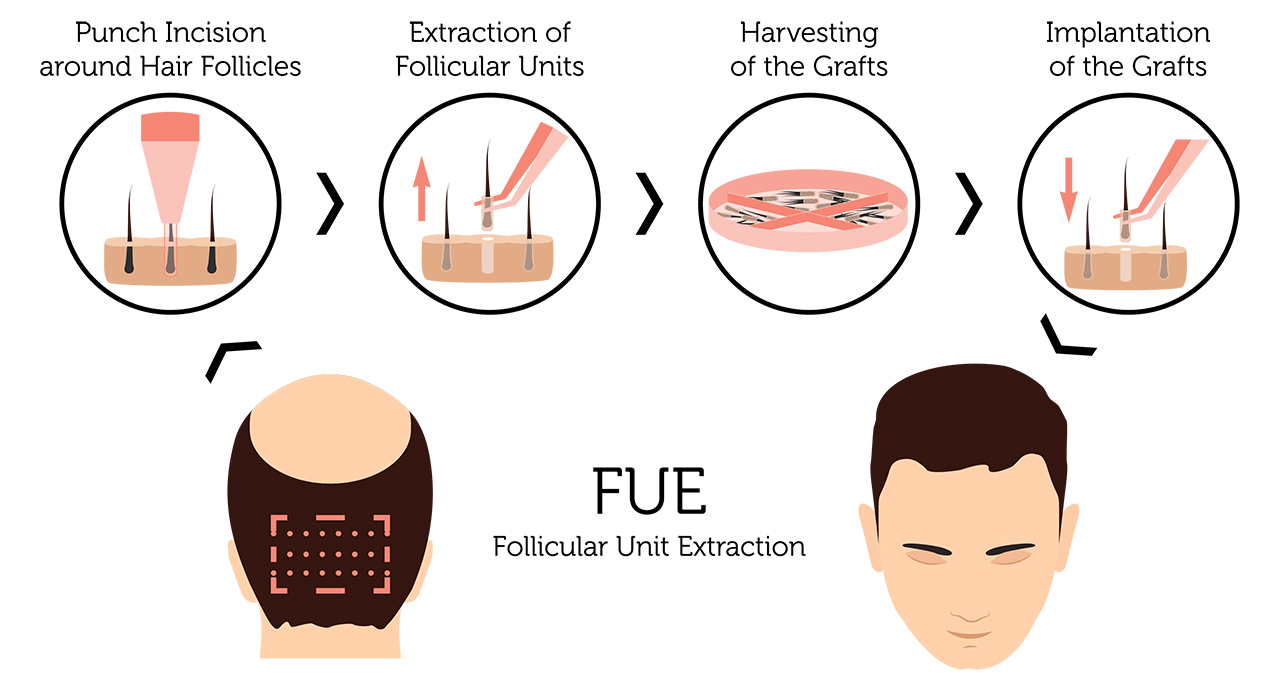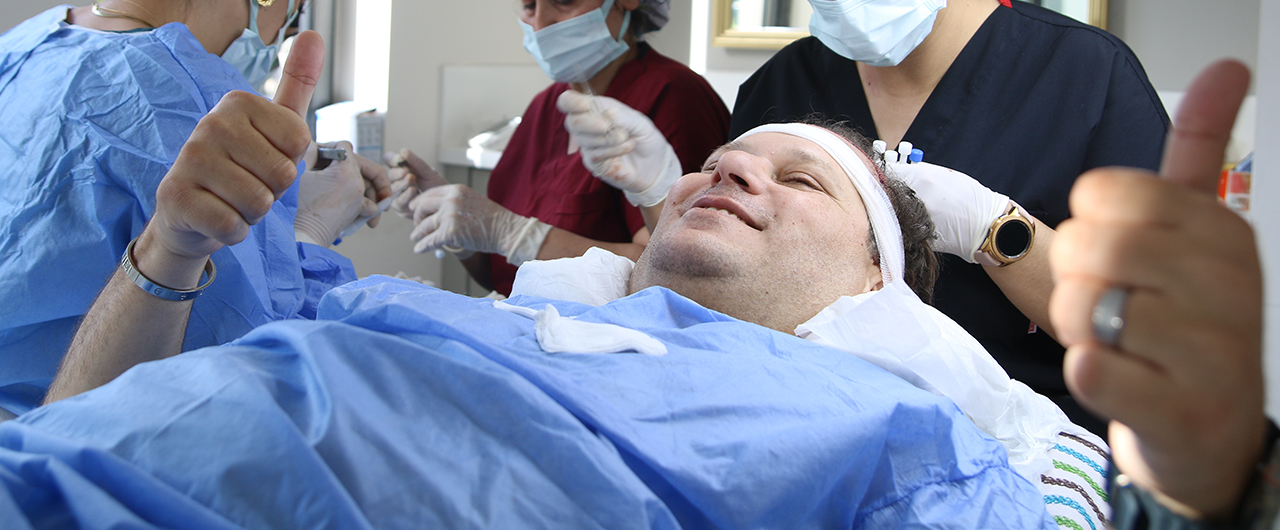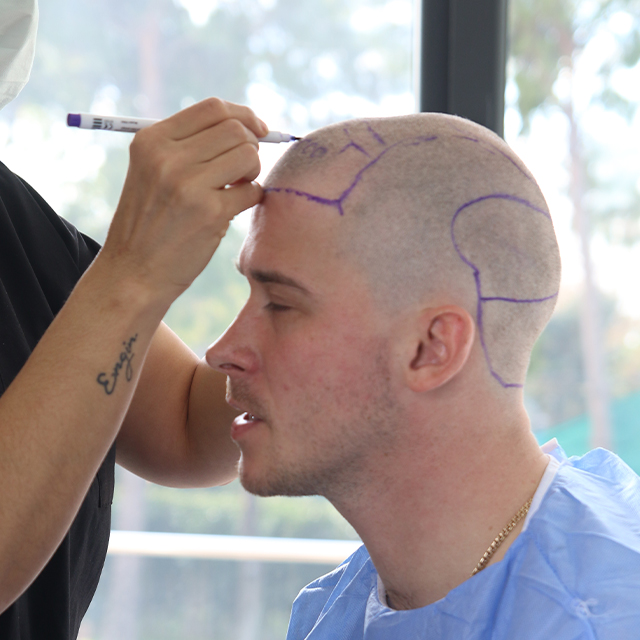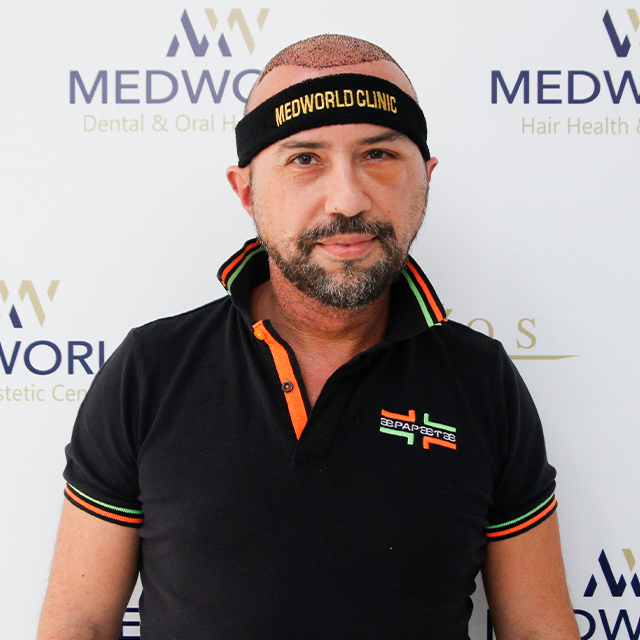What is FUE Hair Transplant ?
FUE Hair Transplants take individual hair follicles from a donor area of the scalp (typically the back of the head) and transplant them to a bald or thinning area (where hair loss has occurred). FUE removes follicles with a small, circular punch tool instead of removing a piece of scalp. FUE is less intrusive than strip harvesting and results in less scarring and a speedier recovery.

What are the advantages of FUE Hair Transplant in Turkey?
The following are some benefits of receiving a FUE Hair Transplant in Turkey:
- Economical: Turkey is renowned for providing hair transplant treatments at a fraction of the price compared to other nations.
- Surgeons with experience: Turkey is home to many expert and knowledgeable hair transplant surgeons who employ the most recent methods and tools to guarantee the greatest outcomes.
- High success rate: Turkey has a high rate of hair transplant treatments that are successful, with many happy patients reporting results that seem natural.
- Rapid healing: Because FUE Hair Transplant does not require the excision of a strip of scalp, the healing process is quicker and less painful.
- Convenient location: As a well-liked tourist destination, Turkey is an ideal choice for individuals wishing to combine a hair transplant with a holiday.
- Quick turnaround: In contrast to other nations, Turkey has a relatively short waiting period for hair transplants, allowing patients to complete their operation fast.
- Service quality: There are many hair transplant clinics in Turkey that provide high-quality services and technologies to guarantee the finest outcomes.

What are the risks of FUE Hair Transplant?
Like any medical operation, FUE Hair Transplant involves risks and potential problems. These:
- Infection: Antibiotics can treat a minor risk of infection at the donor and recipient locations.
- Scarring: FUE leaves little white marks or scars on the scalp where the hair follicles were plucked.
- Numbness or tingling: After the surgery, some patients may feel scalp numbness or tingling, which normally goes away in a few weeks.
- Unsatisfied results: Hair transplant results vary, and some patients may be dissatisfied.
- Graft failure: Some transplanted hair follicles may fail to develop, resulting in patchy or uneven outcomes.
- Allergic responses: Anaesthesia might cause allergic reactions in some patients.
What are the FUE Hair Transplant options in Turkey?
There are various FUE Hair Transplant options available in Turkey, including:
- Manual FUE: This is the old-school FUE technique, in which the doctor physically removes the hair follicles using a tiny punch instrument.
- Motorised FUE: This technique extracts hair follicles more swiftly and effectively than manual FUE by using a motorised punch instrument.
- Sapphire FUE: This technique reportedly results in a more successful transplant because it uses a punch tool coated in sapphire, which is supposed to lower the risk of harm to the hair follicles.
- Robotic FUE: This technique purports to be more accurate and lower the risk of problems by extracting hair follicles using a robotic arm.
- Body Hair Transplant: This technique of FUE Hair Transplant restores hair on the scalp by using hair from other regions of the body, such as the chest, beard, or legs.
- Mega/Giga session: This FUE Hair Transplant technique employs a lot of grafts per session to cover a big area or create a dense appearance.

Who is a good candidate for FUE Hair Transplant ?
Men and women who are balding and wish to regrow hair in the balding area might consider FUE Hair Transplantation. Men and women with thinning or balding hair are suitable candidates for FUE Hair Transplants.
- People with enough healthy hair in the donor area (often the back or sides of the head) to supply the transplant with the hair follicles it needs.
- Those who are generally healthy and free of any problems that could make the surgery dangerous.
- Those who understand that the transplanted hair will take time to grow and have reasonable expectations regarding the procedure’s results.
- Patients who have discussed the risks and potential issues of the surgery with their surgeon and are aware of them.
- Non-smokers, as tobacco use can slow the recovery process.
If hair loss persists, FUE Hair Transplant may need to be done again using the future technique. Because it won’t stop hair loss and could not be enough to cover the needed area, the technique is not advised for people who are losing their hair rapidly.
What should be done before FUE Hair Transplant?
FUE Hair Transplants need numerous preparations:
- Consultation with a hair transplant surgeon: This is crucial to analyse your hair loss situation, determine your suitability for the treatment, and discuss your objectives, expectations, and concerns.
- Medical examination: Your surgeon may demand a medical evaluation to make sure you are healthy and have no medical issues that might make the treatment unsafe.
- Stop specific medications: To reduce bleeding and problems, your surgeon may recommend stopping blood thinners or anti-inflammatory meds before the surgery.
- Smoking slows healing and reduces scalp blood flow, therefore smokers must quit at least two weeks before the surgery.
- To make hair follicle extraction simpler, your surgeon may advise you to shave your head before the surgery.
- Prepare for recovery: Your surgeon will give you specific advice on how to care for your scalp and transplanted hair. Follow these steps for the best results.
- Book transportation and lodging before your hair transplant in Turkey.
- Be psychologically prepared: It’s crucial to mentally prepare for the operation, rehabilitation, and the fact that the transplanted hair may take months to grow.
How is FUE Hair Transplant performed?
With local anaesthetic, FUE Hair Transplants are often done as outpatient procedures. The following stages are often included in the process:
- Local anaesthetic will be given by the surgeon to numb the scalp before the surgery.
- Hair follicle harvesting: The surgeon will take one hair follicle at a time from the donor region using a tiny punch instrument (usually the back or sides of the head). In order to maintain their vitality, the harvested hair follicles are then carefully maintained in a solution.
- Creating recipient sites: In the region where the transplanted hair will be implanted, the surgeon will create a few tiny incisions.
- Graft placement: The surgeon takes care to ensure that the direction and angle of the hair follicles match the surrounding hair as they are then gently inserted into the recipient locations.
- Closure: The wounds are stitched or secured with surgical staples after the grafts have been implanted.
- Recovery: After the treatment, the patient will get comprehensive instructions on how to take care of the newly transplanted hair and the scalp throughout the healing time. The scalp will also be bandaged.
The quantity of hair follicles being transplanted and the size of the recipient region influence how long the surgery takes.

FUE Hair Transplant growth timeline
FUE Hair Transplant growth timeline:
- Initial two weeks: The transplanted hair will come out as part of the healing process.
- 2–4 months: Very fine, short, and silky hair will start to grow in the transplanted location.
- 4–6 months: The new hair will continue to grow and thicken, becoming more apparent and comparable in texture to the surrounding hair.
- 6–12 months: The transplant effects will be noticeable as the hair grows to its full length.
Some patients have quicker hair growth than others. After a year, hair transplant effects may be observed. It takes many months for transplanted hair to grow.
How long does FUE Hair Transplant take in Turkey?
The quantity of hair follicles implanted, and the recipient area, determine the length of a FUE Hair Transplant in Turkey. The operation often takes several hours to a day. The procedure’s duration depends on the quantity of hair follicles transplanted, the recipient area’s size, the method employed, and the surgeon’s ability.
The transplanted hair might take months to grow and show effects after a year.
To see the surgeon and get post-op treatment, you need to stay in Turkey for at least a week.

How long does FUE Hair Transplant last?
Permanent hair loss treatment is FUE Hair Transplant. The transplanted hair follicles come from the back or sides of the head, where DHT doesn’t affect hair development, and will grow in the recipient location for life.
The technique may not halt hair loss in non-transplanted regions. As the patient ages, the surgery may cause hair loss again.
What should be done after FUE Hair Transplant treatment?
For the greatest results after a FUE Hair Transplant, follow your surgeon’s recommendations. Instructions may include:
- Care for the transplanted region: You will be instructed on how to clean and dress the incisions, when to return for follow-up visits, and how to prevent trauma to the transplanted area.
- Medications: Your surgeon may prescribe antibiotics and medications to reduce pain and infection.
- Avoid specific activities: To reduce problems, your surgeon will advise you to avoid swimming, exercising, and washing your hair for a particular time following the treatment.
- Preventing sun exposure: Protect the scalp from the sun during healing.
- Avoid smoking: Smokers should avoid smoking for two weeks following the treatment to enable appropriate healing and scalp blood flow.
- Follow-up visits: Your surgeon will arrange follow-up sessions to assess healing and transplanted hair growth.
- Be patient: Hair transplant results may take months to show.
What to expect after a FUE Hair Transplant on the scalp?
Pain, swelling, and redness are frequent after a FUE Hair Transplant on the scalp. The healing process may also cause scalp stiffness. The transplanted hair may initially come out, but this is typical. After a few months, the transplanted hair should come back. Your surgeon’s aftercare recommendations must be followed for the greatest results.
